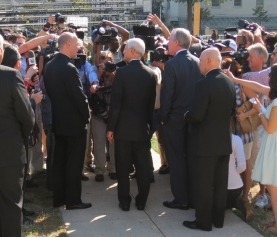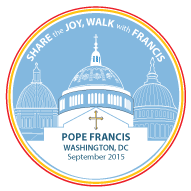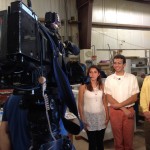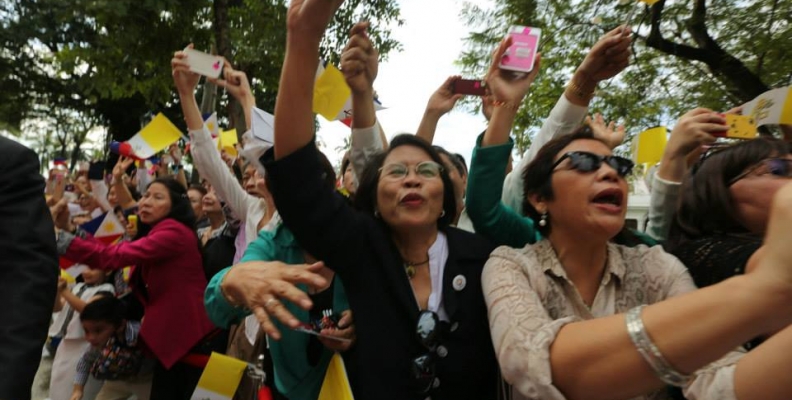
John Garvey: What’s the Big Deal?
On September 23, thousands of people will gather on the lawn at The Catholic University of America when Pope Francis celebrates Mass on the stairs of the Basilica of the National Shrine of the Immaculate Conception. Four days later, an estimated 1.5 million are anticipated to attend the Holy Father’s Mass in Philadelphia.
Why? Every day, multiple times each day, the sacrifice of the Mass is celebrated in churches around the world. At the Basilica alone Mass is said six times a day — seven on Sundays. Faithful Christians pray in their own homes and quietly do their best to follow Christ each day. What is it about the pope that attracts the attention of millions, believers and atheists alike? Martin Luther put the question more forcefully to Pope Leo X almost 500 years ago:
“If all who are in the Church are priests by what character are those, whom we now call priests, to be distinguished from the laity? . . . Holy Scripture makes no distinction between them, except that those, who are now boastfully called popes, bishops, and lords, it calls ministers, servants, and stewards, who are to serve the rest in the ministry of the Word, for teaching the faith of Christ”
Reams have been written about the scriptural roots of the papacy, the need for a teaching authority in the Church. I won’t add to that here. I’d like, instead, to consider the purpose of such a visible head of the Church. Luther does have a point. Since Christians are “a chosen race, a royal priesthood, a holy nation” (1 Pet. 2:9), they all, as Luther puts it, “are worthy to appear before God, to pray for others, and to teach one another mutually the things which are of God.” Why is the Pope’s example so meaningful to so many people?
To better understand the visibility of the Church, Pope Francis has pointed to the visibility of its founder:
“To understand the relationship, in the Church, between her visible and spiritual reality, there is no other way but to look to Christ, whose Body is the Church . . . Even in Christ, in fact, through the mystery of the Incarnation, we recognize a human nature and a divine nature, united in the same person in a wonderful and indissoluble way. This applies in a similar manner to the Church. Just as in Christ, human nature serves the divine in accordance with the fulfillment of Salvation, so, in a similar way, does the visible reality serve the spiritual reality of the Church.”
Christ uses his visible humanity to save us as humans, and human beings are made of soul and body. We learn through our senses: We need to hear the good news. We need to taste and see. We need to touch Christ’s pierced hands and side. Christ did not simply preach the Beatitudes and leave. He taught all of our senses by the example of his life and death.
We still need that example. That’s why we need the saints. As Pope Benedict XVI observed, “The true apology of Christian faith, the most convincing demonstration of its truth against every denial, are the saints, and the beauty that the faith has generated.” The Pope too can be a visible sign of God’s love for us. Of course, the pope’s visibility means he can also be a cause of great scandal. That has at times been the case in the history of the papacy. All the more reason to celebrate the visit of a faithful servant of the servants of God.
— John Garvey is President of The Catholic University of America.


